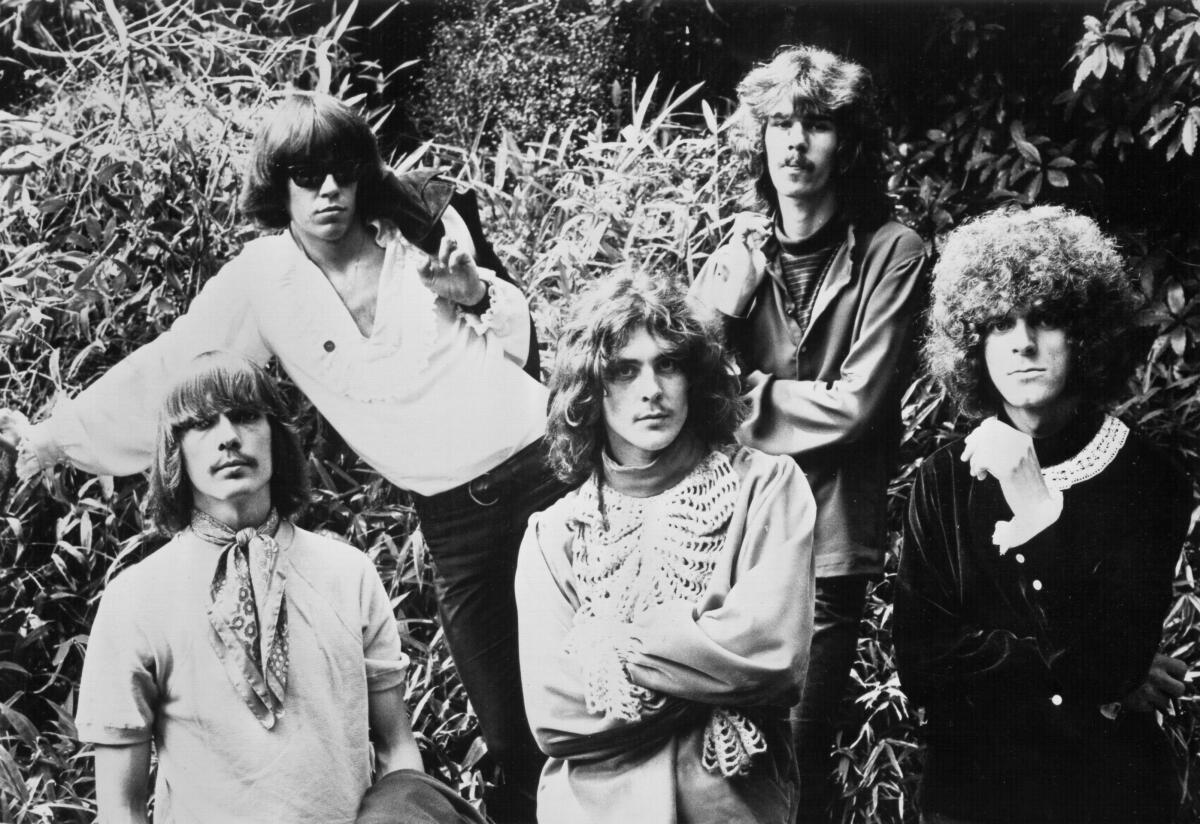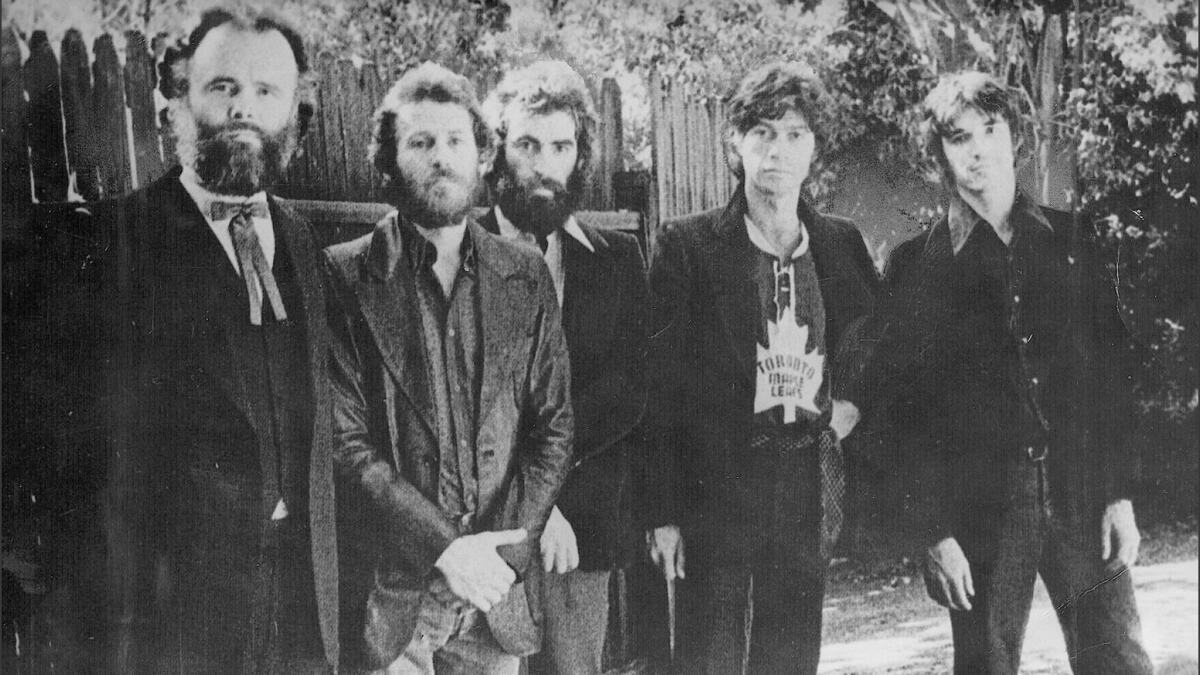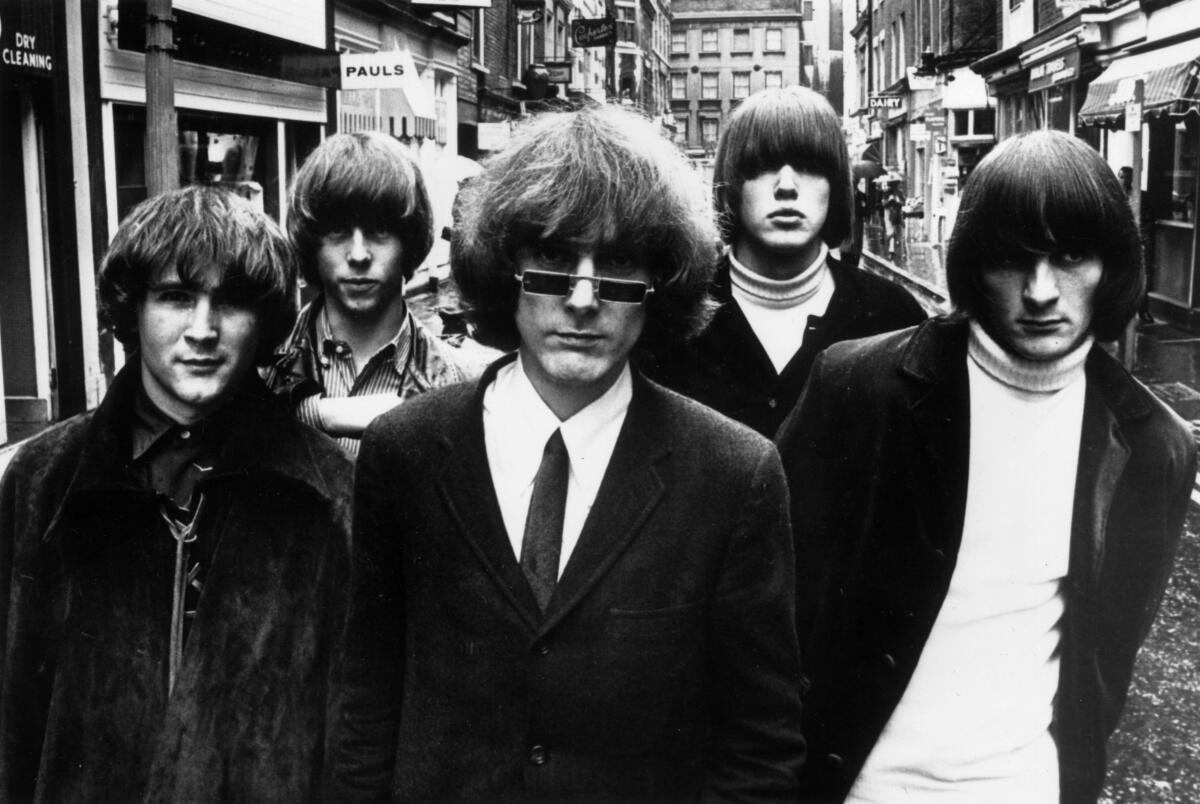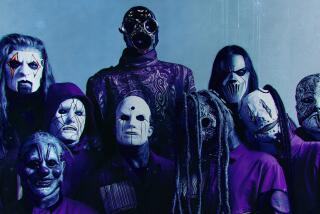‘Easy Rider’ at 50: How they put together that groundbreaking soundtrack
A trip to the local theater will throw you back in time to 1969 Hollywood. Quentin Tarantino’s latest, “Once Upon a Time ... in Hollywood,” is a movie full of references to hippies and the counterculture, set to a rock ’n’ roll jukebox soundtrack of its era.
Fifty years ago, “Easy Rider” not only helped define the counterculture — with its frank depiction of drugs and free love, of “longhairs” squared against square culture — it also revolutionized the movie soundtrack, rejecting a traditional orchestra in favor of a hip “song score.”
Conceived by its stars, Peter Fonda and Dennis Hopper, along with “Dr. Strangelove” co-writer Terry Southern, “Easy Rider” railed against institutions both on screen and behind the camera. Two drug-pushing hippies ride their motorcycles across America, picking up hitchhikers, stopping at communes and brushing with the law until they reach their ill-fated end in the Deep South.
Produced for around $350,000 by Bert Schneider and Bob Rafelson, the film was one of the first hits made outside of the studio system. The choice by Fonda and Hopper, the latter of whom also directed, to score the film with rock songs of their generation was as much economical as it was artistic. It was expensive to hire a composer and an orchestra, so as they edited the film they “temped” it with songs from a pile of roughly 200 records.
“And we kept listening and culling, and listening and culling, and finally getting to the point where we had really worked out, over a long period of time, the music that we felt would be appropriate,” says “Easy Rider” editor Donn Cambern.
“Easy Rider” wasn’t the first film to use rock music — “Blackboard Jungle” was a pioneer, and “The Graduate” was set to the songs of Simon & Garfunkel — but it was arguably the first to use a curated playlist in place of an instrumental score. Schneider and Rafelson continued the trend of “jukebox scores” with “The Last Picture Show” and “Five Easy Pieces,” and the rest of Hollywood took notice.
Filmmakers such as Martin Scorsese, John Hughes, Wes Anderson and, famously, Tarantino carried on the tradition of using existing songs in a sophisticated, story-driven way — but there’s also been a 50-year wave of more crass, marketing-motivated imitators.
“This was brand new,” says Cambern. “‘Easy Rider’ opened that whole conception of thinking that a song really needs to be placed for its narrative value, as well as its playability in a scene — that is, its contribution.”
A lot of the film’s personnel were alumni of “The Monkees.” Schneider produced the TV series about the ersatz rock band — which Cambern was a music editor on — as well as their feature film, “Head.” Costar Jack Nicholson was a writer and producer on that film. “Easy Rider” music supervisor Joel Sill often joined the Monkees on tour because his father, Lester Sill, was their musical supervisor.

But there are no Monkees songs in “Easy Rider.” The radical road movie, which doubles as a travelogue of America with its winsome Laszlo Kovacs photography, moves to rougher rhythms. The first song heard is “The Pusher” — a bluesy, explicitly drug-minded song by Steppenwolf — which accompanies a montage of Billy (Hopper) and Wyatt (Fonda) hiding drug money inside their motorcycles.
“When the first song really hit, it turned into two things,” Cambern says. “The first one was a comment on the hold of drugs that was beginning to take hold in the counterculture. ‘The Pusher Man.’ Followed by the grandeur, out on the highway, of this wonderful country that we were living in. So there was joy — tremendous amount of joy.”
The film is structured around several cross-country montages, and “each ride really was a story unto itself,” Cambern says. “We wanted music that would contribute to the meaning of the story as they were traveling.”
Steppenwolf’s raucous anthem “Born to Be Wild” plays over Billy and Wyatt’s first ride during the opening credits. The second joyride is set to the rambling, uptempo strains of “Wasn’t Born to Follow” by the Byrds, which reprises during a playful scene of skinny-dipping with members of the commune — briefly morphing from acoustic folksiness into electric psychedelia.

Our heroes pick up a hitchhiker and travel through desert and mountain country to “The Weight” (“Take a Load Off”), a sunny singalong performed by the Band. One of the film’s forays into humor comes courtesy of the goofy, honky-tonk “Bird Song” (“If You Want to Be a Bird”), which underscores the first ride with Jack Nicholson’s ACLU lawyer, George, grinning giddily underneath his gold football helmet.
“I mean, that’s Nicholson,” Joel Sill says of the song by psychedelic-folk group the Holy Modal Rounders. “What could be better? I think that scene really was the platform for him moving on, in terms of getting more roles.”
Another laugh arrives when George tries his first joint one night, and the following ride through horse country is cut to “Don’t Bogart Me” (a.k.a. “Don’t Bogart That Joint”) by the Fraternity of Man. “It was a continuum of a good feeling, of discovery of the land they were going through,” Cambern says. “And then it changed to Jimi Hendrix. Abruptly.”
The good vibes smash-cut to a shot of the Long-Allen Bridge taking the characters into the South, scored by Hendrix’s syncopated, acidic “If 6 Was 9.” The song viscerally conveys this place of danger where, according to George, the natives hate what Billy and Wyatt represent: freedom.
“That song set up that whole sense of: ‘Oh, God ... we’re in the wrong place, guys,’” Cambern says. “The audience just lurched forward. ‘Uh oh.’ It’s a wonderful moment.”
Cambern’s radical editing, with its lightning-fast flashbacks and flash-forwards, also included cutting on the less obvious “kick beats” in the music — rather than the strong beats — in order to keep viewers on their toes.
Equally interesting is where there is no music. Those Southern boys sneak up on the sleeping trio at night and beat George to death. Where a more conventional score would normally underline the tension, the soundtrack here is silent.
The fuzzy, kaleidoscope sound of “Kyrie Eleison Mardis Gras” by the Electric Prunes accompanies the mournful meal that Wyatt and Billy share afterward. Brief snatches of dialogue (“He would have wanted us to”) occasionally break up the song, which continues over a montage at a brothel.
After a night of drunken revelry in the Mardi Gras parade, set to a diegetic street performance of “When the Saints Go Marching In,” the music goes away again, and there is no song for the acid-tripping, makeout scene in a New Orleans cemetery — just the sound of a girl reciting scripture, snippets of crying and Wyatt talking to a statue as though it were his mother.
Then, suddenly, “Flash Bam Pow” by the Electric Flag bangs as Billy and Wyatt ride out of the Crescent City. Roger McGuinn’s cover of Bob Dylan’s “It’s Alright Ma (I’m Only Bleeding)” accompanies their dawn ride after a short but important nighttime talk (“We blew it,” Wyatt sighs), but fades out as the duo arrives at their destiny on a country road. No music plays as each of them are shot to death by a local, no music plays as Wyatt’s bike bursts into flames, and there is only silence as the camera rises into the sky.

The end credits roll to “Ballad of Easy Rider,” the soundtrack’s most straight-on commentary (“All they wanted was to be free”) — which Dylan partially composed, but was completed and performed by McGuinn.
Joel Sill became involved because he was working at Steppenwolf’s publishing company, Dunhill Records. Schneider had temped all of these great songs into the picture, but hadn’t licensed any of them. So Sill, whose record industry ties ran deep — his father started Philles Records with Phil Spector, who has a small role in “Easy Rider” — went to work getting permission for each song.
He bartered with Mo Ostin at Warner Bros. to get the Hendrix song in exchange for $250 and the Canadian manufacturing rights for audio cassettes. To get the Byrds, he went to Clive Davis at Columbia Records but was initially turned down.
“I was kind of stumped on what to do,” Sill says. “But, coincidentally, a week later at a gathering at a songwriter’s house — Tommy Boyce — David Geffen was there on a swing with Clive. So I jumped on the swing and said to Clive: ‘You’re going to lose a lot of money if you’re not involved with this project.’ He wound up getting vinyl pressing rights for the soundtrack album. Columbia had three pressing plants at the time, and pressing vinyl was about 3 cents a unit. There’s a lot of money on an album, plus the royalty for the Byrds — so he did very well.”
More to Read
Only good movies
Get the Indie Focus newsletter, Mark Olsen's weekly guide to the world of cinema.
You may occasionally receive promotional content from the Los Angeles Times.










